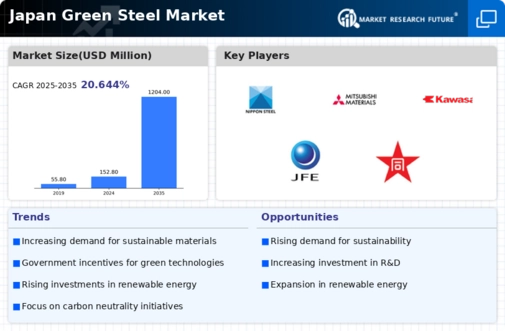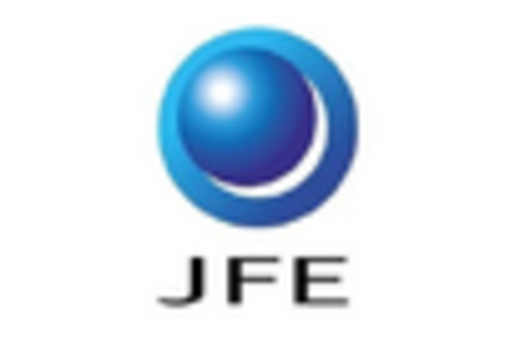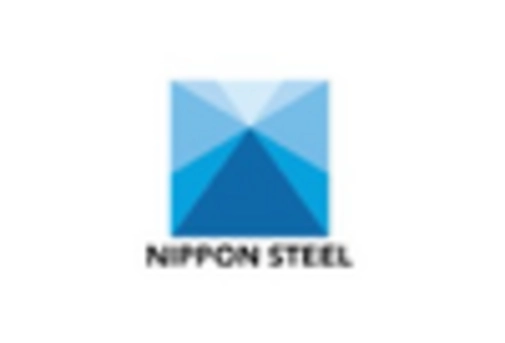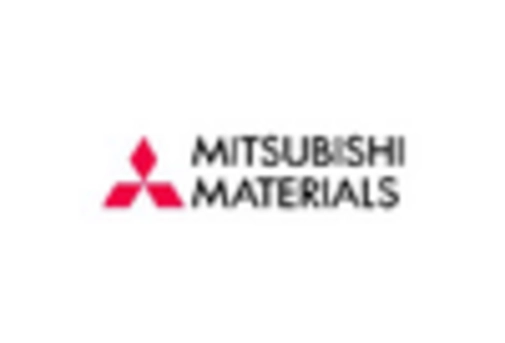The green steel market in Japan is characterized by a rapidly evolving competitive landscape, driven by increasing environmental regulations and a growing demand for sustainable materials. Major players such as Nippon Steel Corporation (Japan), JFE Steel Corporation (Japan), and Tokyo Steel Manufacturing Co., Ltd. (Japan) are at the forefront of this transformation. Nippon Steel Corporation (Japan) has positioned itself as a leader in innovation, focusing on the development of hydrogen-based steelmaking processes, which could significantly reduce carbon emissions. Meanwhile, JFE Steel Corporation (Japan) emphasizes strategic partnerships with technology firms to enhance its production efficiency and sustainability practices. Tokyo Steel Manufacturing Co., Ltd. (Japan) is also notable for its commitment to recycling scrap steel, which aligns with the circular economy principles, thereby shaping a competitive environment that prioritizes sustainability.
In terms of business tactics, companies are increasingly localizing manufacturing to reduce transportation emissions and optimize supply chains. The market appears moderately fragmented, with several key players exerting influence through innovative practices and strategic collaborations. This structure allows for a diverse range of offerings, catering to various segments of the market while fostering competition that drives technological advancements.
In November 2025, Nippon Steel Corporation (Japan) announced a groundbreaking partnership with a leading renewable energy provider to develop a pilot hydrogen production facility. This initiative is expected to enhance the company's capabilities in producing green steel, potentially positioning it as a pioneer in the sector. The strategic importance of this move lies in its alignment with global decarbonization goals, which could attract environmentally conscious investors and customers.
In October 2025, JFE Steel Corporation (Japan) unveiled its new digital platform aimed at optimizing its supply chain management. This platform leverages AI and big data analytics to enhance operational efficiency and reduce waste. The strategic significance of this development is profound, as it not only streamlines operations but also reinforces the company's commitment to sustainability by minimizing resource consumption.
In September 2025, Tokyo Steel Manufacturing Co., Ltd. (Japan) expanded its recycling capabilities by investing in advanced sorting technologies for scrap steel. This investment is crucial as it enhances the company's ability to produce high-quality recycled steel, thereby reducing reliance on virgin materials. The strategic implications of this expansion suggest a robust commitment to sustainability and a proactive approach to meeting increasing regulatory demands.
As of December 2025, the competitive trends in the green steel market are increasingly defined by digitalization, sustainability, and the integration of advanced technologies such as AI. Strategic alliances among key players are shaping the landscape, fostering innovation and enhancing supply chain reliability. The shift from price-based competition to a focus on technological advancement and sustainable practices is evident, suggesting that future competitive differentiation will hinge on the ability to innovate and adapt to evolving market demands.
















Leave a Comment